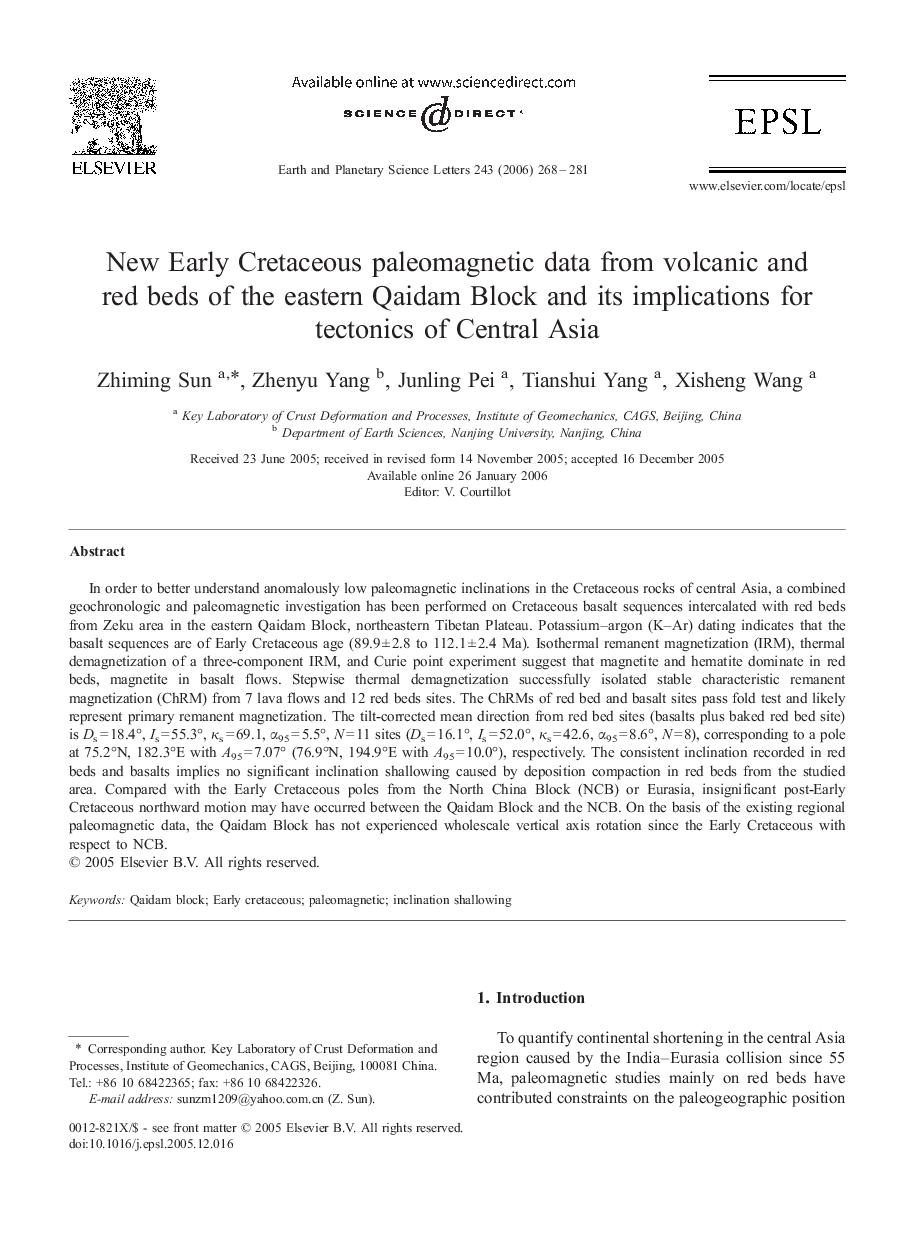| کد مقاله | کد نشریه | سال انتشار | مقاله انگلیسی | نسخه تمام متن |
|---|---|---|---|---|
| 4681175 | 1634949 | 2006 | 14 صفحه PDF | دانلود رایگان |

In order to better understand anomalously low paleomagnetic inclinations in the Cretaceous rocks of central Asia, a combined geochronologic and paleomagnetic investigation has been performed on Cretaceous basalt sequences intercalated with red beds from Zeku area in the eastern Qaidam Block, northeastern Tibetan Plateau. Potassium–argon (K–Ar) dating indicates that the basalt sequences are of Early Cretaceous age (89.9 ± 2.8 to 112.1 ± 2.4 Ma). Isothermal remanent magnetization (IRM), thermal demagnetization of a three-component IRM, and Curie point experiment suggest that magnetite and hematite dominate in red beds, magnetite in basalt flows. Stepwise thermal demagnetization successfully isolated stable characteristic remanent magnetization (ChRM) from 7 lava flows and 12 red beds sites. The ChRMs of red bed and basalt sites pass fold test and likely represent primary remanent magnetization. The tilt-corrected mean direction from red bed sites (basalts plus baked red bed site) is Ds = 18.4°, Is = 55.3°, κs = 69.1, α95 = 5.5°, N = 11 sites (Ds = 16.1°, Is = 52.0°, κs = 42.6, α95 = 8.6°, N = 8), corresponding to a pole at 75.2°N, 182.3°E with A95 = 7.07° (76.9°N, 194.9°E with A95 = 10.0°), respectively. The consistent inclination recorded in red beds and basalts implies no significant inclination shallowing caused by deposition compaction in red beds from the studied area. Compared with the Early Cretaceous poles from the North China Block (NCB) or Eurasia, insignificant post-Early Cretaceous northward motion may have occurred between the Qaidam Block and the NCB. On the basis of the existing regional paleomagnetic data, the Qaidam Block has not experienced wholescale vertical axis rotation since the Early Cretaceous with respect to NCB.
Journal: Earth and Planetary Science Letters - Volume 243, Issues 1–2, 15 March 2006, Pages 268–281